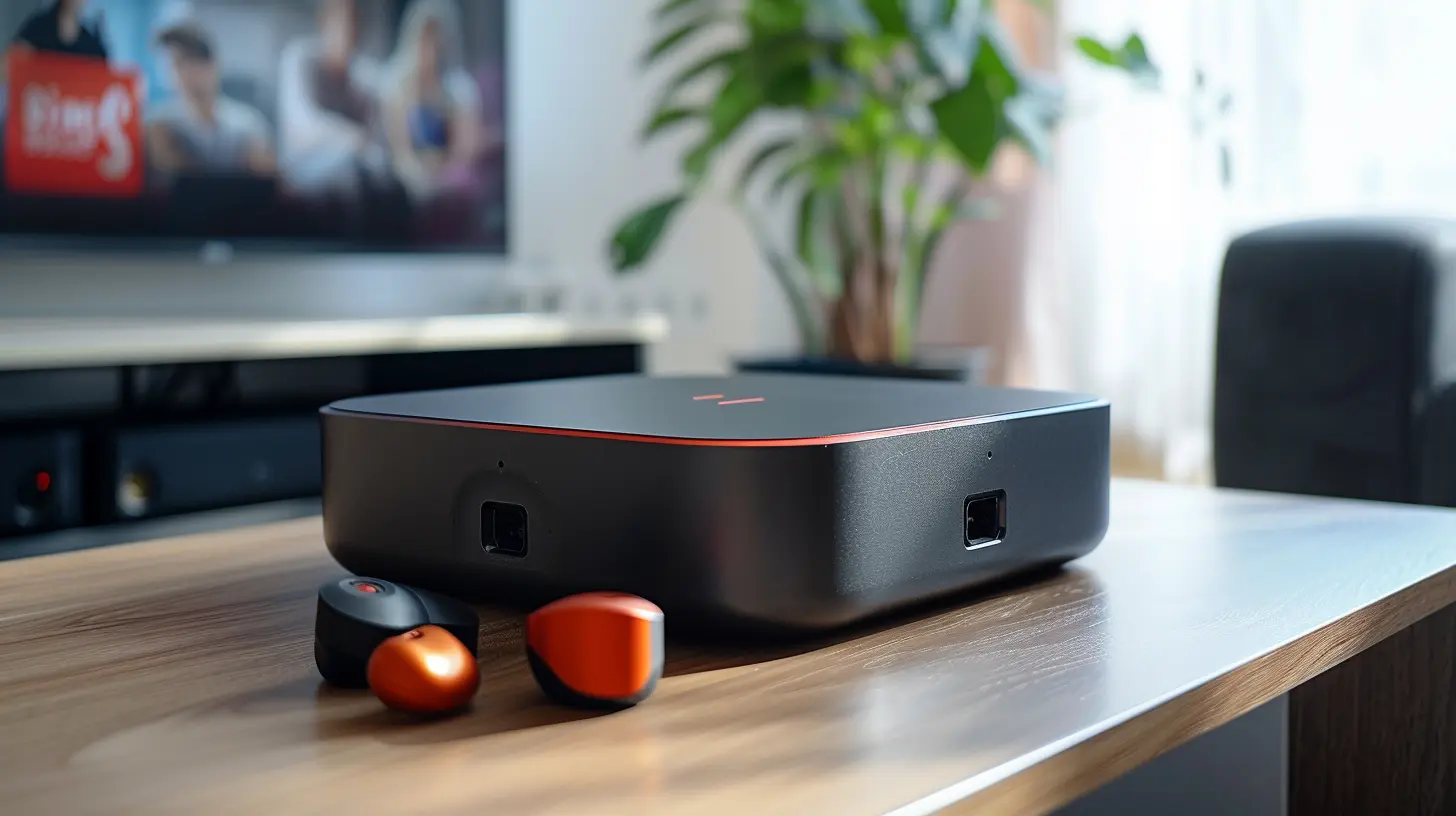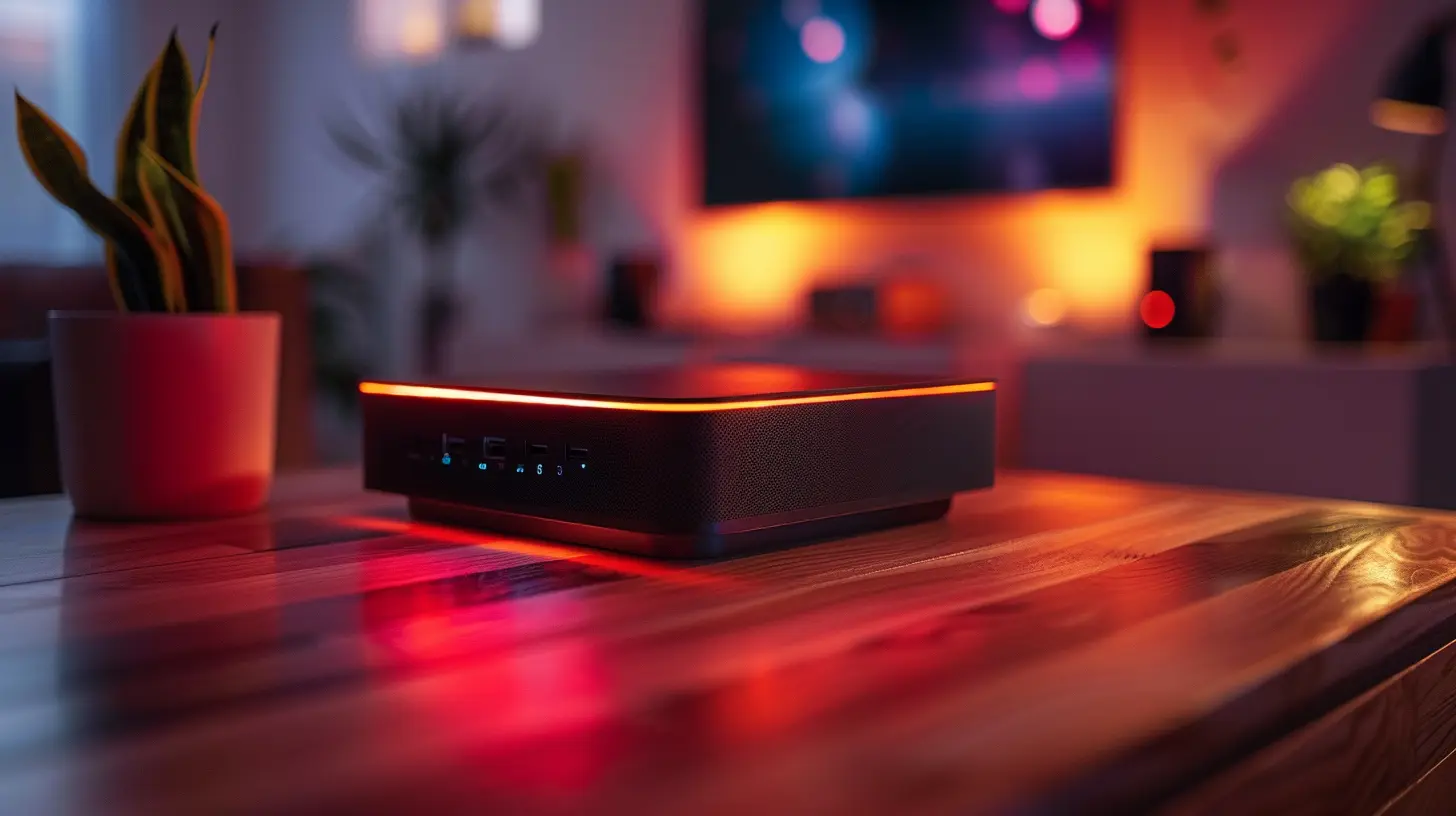How to Optimize Your Streaming Device for Faster Streaming
7 October 2025
You sit down with your popcorn, ready to binge-watch your favorite show, only to be greeted by the dreaded buffering circle. We’ve all been there. The constant pauses, the pixelated images—it’s enough to make anyone toss their remote across the room. But before you let frustration take over, there’s good news! You can actually optimize your streaming device to make it faster and smoother. That’s right, no more endless buffering or low-quality video streams. Let’s dive into how you can turn your streaming experience into a buttery-smooth, lightning-fast one.

Why Does Streaming Slow Down?
Before we get into the nitty-gritty of optimizing your streaming device, it's good to know why streaming sometimes slows down in the first place. It’s not always your device's fault. The internet is a complex web of servers, routers, and your home Wi-Fi connection. Any hiccups along the way can slow down your streaming experience.Some common culprits include:
1. Weak Wi-Fi signal: If your streaming device is too far from your router or there’s interference from walls or other electronics, your connection might suffer.
2. Outdated hardware: Streaming devices, like anything else, age over time. An older device may not be able to keep up with modern streaming demands.
3. ISP throttling: Internet Service Providers (ISPs) sometimes slow down your connection intentionally, especially if you're using a lot of bandwidth (like when streaming HD or 4K videos).
4. Background apps: Some apps running in the background of your device can eat up your bandwidth.
5. Overcrowded network: If multiple devices in your home are streaming, gaming, or downloading at the same time, your Wi-Fi might struggle to keep up.
So, how can you fix these issues and enjoy faster streaming? Let’s break it down into actionable steps.

1. Upgrade Your Internet Speed
This might sound like a no-brainer, but it’s one of the most effective ways to improve your streaming quality. If you’re trying to stream 4K content but your internet speed is only 10 Mbps, it's like trying to drive a sports car through a traffic jam—it’s just not going to perform as you’d like.What speed do you need?
- Standard Definition (SD): 3-5 Mbps- High Definition (HD): 5-10 Mbps
- 4K Ultra HD: 25 Mbps or higher
If you’re unsure about your current internet speed, you can easily run a speed test online. If the results show a lower speed than what you’re paying for, get in touch with your internet provider to see what’s going on.
If you're on the lower end of the speed spectrum, consider upgrading your plan. Streaming services like Netflix, Hulu, and Disney+ are getting more bandwidth-hungry by the day, especially with the rise of 4K and HDR content.

2. Optimize Your Wi-Fi Connection
Even if you have blazing-fast internet, a poor Wi-Fi connection can still drag down your streaming quality. The good news is you don’t need to be a tech genius to make some simple improvements.Move Your Router
If your router is tucked away in a closet or behind a wall, it’s time to give it some breathing room. Wi-Fi signals weaken as they pass through walls and floors, so the closer your streaming device is to the router, the better. Ideally, place your router in a central location in your home.Use a Wired Connection
Wi-Fi can be convenient, but an Ethernet cable will give you the fastest and most stable connection. If your streaming device has an Ethernet port, consider plugging it in directly to your router. It’s like giving your device a VIP pass to the internet highway.Upgrade Your Router
If your router is several years old, it might be time for an upgrade. Newer routers, especially those with dual-band or tri-band capabilities, can handle more devices and offer faster speeds. Look for routers that support Wi-Fi 6 for the best performance.Limit Other Devices
Your Wi-Fi bandwidth is a shared resource, meaning if someone else is gaming, downloading large files, or streaming on another device, it’s going to affect your connection. Try limiting the number of devices on your network while you’re streaming, or invest in a router with Quality of Service (QoS) settings that prioritize streaming traffic.
3. Clear Cache and Unused Apps
Your streaming device, whether it’s a Roku, Fire TV, Apple TV, or smart TV, stores temporary data known as cache. Over time, this cache can build up and slow down your device’s performance.How to clear cache:
- Fire TV: Go to Settings > Applications > Manage Installed Applications > Select the app > Clear Cache.- Roku: Press the Home button five times, then the Up arrow, and finally the Rewind and Fast Forward buttons to clear cache.
- Apple TV: While there’s no direct option to clear cache, you can restart the device to refresh it.
Also, take a look at the apps you’ve installed but aren’t using. These can not only take up storage space but may also run in the background, consuming your device’s resources. Uninstall any apps you don’t need.
4. Keep Your Device Updated
Manufacturers frequently release software updates to improve performance, fix bugs, and enhance compatibility with new video formats. If you haven’t updated your streaming device in a while, you might be missing out on these improvements.How to update your device:
- Fire TV: Go to Settings > My Fire TV > About > Check for Updates.- Roku: Go to Settings > System > System Update > Check Now.
- Apple TV: Go to Settings > System > Software Updates > Update Software.
Enabling automatic updates is a good way to ensure you’re always running the latest version.
5. Adjust Streaming Quality Settings
Most streaming services automatically adjust the video quality based on your internet speed. However, if you’re experiencing buffering, you might want to manually lower the video resolution to reduce the strain on your connection.For example, Netflix lets you change video quality settings by going to Account > Playback Settings and choosing between Low, Medium, and High. Reducing the quality to standard definition can give you a smoother experience if your internet is struggling.
Pro Tip: Turn off autoplay for the next episode or video. This can give your device a breather and prevent unnecessary bandwidth use.
6. Use a VPN (But Be Cautious)
A VPN (Virtual Private Network) can help protect your privacy by masking your IP address, but it can also slow down your connection if the VPN server is far away or overloaded. However, some users find that using a VPN can bypass ISP throttling, potentially speeding up their connection.If you suspect your ISP is throttling your internet during peak times, trying a reputable VPN might help. Just keep in mind that this won’t always work, and using a VPN might slow things down even more if the server you’re connected to isn’t optimized for speed.
7. Restart Your Router and Device
Sometimes, the simplest solutions are the most effective. Restarting your router can clear up bandwidth and refresh your connection. Similarly, restarting your streaming device can free up memory and clear any temporary glitches.How to restart your router:
Unplug it from the power source, wait about 30 seconds, and plug it back in. Once it’s booted up, try streaming again to see if the performance has improved.For your streaming device, simply turn it off or unplug it for a few seconds, then power it back on.
8. Consider Upgrading Your Streaming Device
If you’ve tried all the above tips and your streaming is still sluggish, it might be time to consider upgrading your device. Older devices may struggle to keep up with modern streaming demands, especially with the rise of 4K and HDR content.Newer streaming devices, such as the latest Roku Ultra, Amazon Fire Stick 4K Max, or Apple TV 4K, offer faster processors, better Wi-Fi reception, and support for the latest video formats. Investing in one of these devices might be the key to unlocking a faster and more reliable streaming experience.
Final Thoughts
With just a few tweaks, you can drastically improve the performance of your streaming device. Whether it’s upgrading your internet plan, optimizing your Wi-Fi, or simply clearing out unused apps, you’ll be streaming your favorite shows and movies in no time—without those annoying pauses.We’ve all been victims of the buffering wheel, but it doesn’t have to rule your life. Implement these tips, and your next movie night will be a smooth ride. So grab that remote, make a few adjustments, and get ready to stream like you’ve never streamed before!
all images in this post were generated using AI tools
Category:
Streaming DevicesAuthor:

Vincent Hubbard
Discussion
rate this article
1 comments
Mercy Shaffer
Optimizing your streaming device is like decluttering your closet—suddenly, you can find your favorite sweater... I mean, show! Just remember, even the best tech can’t speed up your internet connection if your Wi-Fi’s on a coffee break!
October 17, 2025 at 12:33 PM

Vincent Hubbard
Absolutely! Just like decluttering brings clarity, optimizing your streaming device enhances your viewing experience. And yes, a stable Wi-Fi connection is key!


